Overview
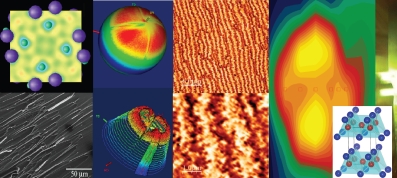
From the left, first column: (upper figure) Cut plane view of electron bonding charge densities of an iron-phosphorus compound obtained from ab initio calculations, and (lower figure) scanning electron micrograph of fracture surface of ductile amorphous steel showing network of plastic deformation zones. Second column: Pole figures of a (002) MnAl thin film deposited on a MgO substrate. Third column: (upper) The magnetic strip domain structure of MnAl thin film revealed by Magnetic Force Microscopy image. (Lower) The detailed magnetic parallel strip domains showing the width is ~10 nm. Fourth column: Color contour map of the strongly anisotropic spin resonance neutron scattering intensity in the momentum space obtained from superconducting FeTe0.5Se0.5 whose crystal structure is shown in the inset.
Condensed matter physics seeks to understand the striking new physical properties that may emerge when very large numbers of atoms or molecules organize into solids or liquids. Research in this area has led to fundamental breakthroughs in our understanding of metals, semiconductors and superconductors, as well as to the inventions of the transistor, diode laser, and integrated circuit. Condensed matter physics thus comprises the technological underpinning for the entire modern computer and communications industry. For these reasons, worldwide, this branch of physics commands the largest number of researchers, who work in academic institutions, major industrial and government laboratories, and small entrepreneurial enterprises. The problems addressed by condensed matter physicists are often interdiscplinary in nature, affecting a number of other scientific fields including chemistry, biology, electrical engineering, and materials science. The University of Virginia maintains a diverse and vigorous research program in both experimental and theoretical condensed matter physics.
The experimental condensed matter research groups at UVa explore the structural, optical, electronic, and magnetic properties of different types of solids ranging from amorphous to crystalline systems with novel properties. Activities include the synthesis and characterization of 2D and 3D quantum materials, topological insulators and semimetals, cuprate high-temperature superconductors, colossal magneto resistive manganites, spintronic magnetic thin films, photovoltaic perovskites, and complex composition alloys, measurements of electronic and magnetic properties using various advanced analytical tools including angle-resolved photoemission spectroscopy, characterization of static and dynamic lattice effects using the pair density function analysis. The condensed matter community at UVa has access to a variety of cryogenic facilities capable of scanning temperatures from as low as 15 mK to room temperature, several physical property measurement systems, different scanning-probe instruments such as scanning tunneling, atomic force, and magnetic force microscopes, various thin-film deposition systems, and a range of microwave and millimeter-wave analytic instruments. In addition, many research projects work closely with Electrical Engineering and Materials Science Departments, using facilities such as the Microfabrication Laboratories and Nanoscale Materials Characterization Facility, as well as national labs where high magnetic field sources are available. The group also performs research at national and international neutron and x-ray facilities and carries out high precision measurements on the atomistic properties of materials, particularly under high pressure.
Theoretical condensed matter physicists at UVa try to arrive at a quantitative description of many unusual properties observed in novel materials and fluids. Such research includes an investigation into what makes the new generation of high-temperature superconductors work as they do, solving model problems like quantum spin chains which are believed to contain the features of newly synthesized low-dimensional metals and magnets. Studies of the structure of magnetic vortices in superconductors and the interactions that bind atoms and molecules to solid surfaces are also underway. For example, the point-contact tunneling amplitude for the fractional quantum Hall effect was recently exactly computed.
Personnel
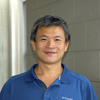 Gia-Wei Chern
Gia-Wei ChernMy primary research interests are in theoretical condensed matter physics with a special focus on strongly correlated electron systems. A central theme of my research is concerned with the following two questions: (i) What kind of emergent phases and collective behaviors are possible in a many-body system ? and (ii) What are their experimental manifestations ? Our approach to strongly correlated systems is based on a combination of model building, analytical calculation, and numerical simulations. Find out more about my research. More>
 Avik Ghosh
Avik GhoshAssociated Faculty: En-Elec/Computer Engr Dept
At the Virginia Nano-Computing Research Group (http://www.ece.virginia.edu/vino/), our focus is on understanding non-equilibrium properties of nano-scale material structures for interesting applications. Our work applies a combined understanding of fundamental physics, chemistry, material science, and device engineering to explore novel device concepts. Our goal is to connect emerging materials with novel devices towards innovative circuit and architecture, using tools that go from 'first principles' models to quantum transport ... More>
 Israel Klich
Israel KlichMy main field of interest is condensed matter physics with strong overlaps with mathematical physics and field theory. My research interests include entanglement in many-body systems, the Casimir effect, topological order and non-equilibrium statistical mechanics. More>
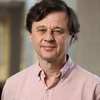 Eugene Kolomeisky
Eugene KolomeiskyMy current research effort consists of trying to understand static and dynamic properties of low-dimensional nonuniform quantum Bose gases. The experimental observation of Bose-Einstein condensation (1995) in trapped alkali vapors has ushered in a new era of superlow-temperature physics bridging the disciplines of atomic and condensed matter physics. Today, experimentalists can produce and manipulate condensates of different sizes and various geometries, and practical applications of this new state of matter are just on the horizon. Some of these applications (ultrasensitive ... More>
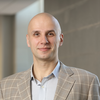 Dmytro Pesin
Dmytro PesinA condensed matter theorist whose research focuses on quantum many-particle systems, Dmytro Pesin studies the effects of particle correlations and disorder physics in topological systems, providing guidance for material research by considering realistic aspects of topological phases. In particular, Prof. Pesin studies the effects of band geometry on the electronic hydrodynamics in clean crystals, in particular Dirac/Weyl semimetals. He also works on developing the theory of current-induced phenomena in three-dimensional metals with nontrivial band geometry. More>
 Chi Yan Jeffrey Teo
Chi Yan Jeffrey TeoA central theme of condensed matter physics is the study of systems with emergent collective degrees of freedom that can behave very differently from the microscopic individual constituents from which they arise. Quantum mechanics provides a further topological twist to the conventional theory. Due to strong correlation effects, the quantum ground state of a condensed matter system can be spatially entangled to an extent where its emergent quasiparticles behave so exotically that they are impossible to be realized by conventional fundamental particles. For example, an ... More>
 Marija Vucelja
Marija VuceljaMarija Vucelja's research field is nonequilibrium statistical physics, with applications to soft-condensed matter and computational physics (physics of sampling). More>
 Physics at Virginia
Physics at Virginia
